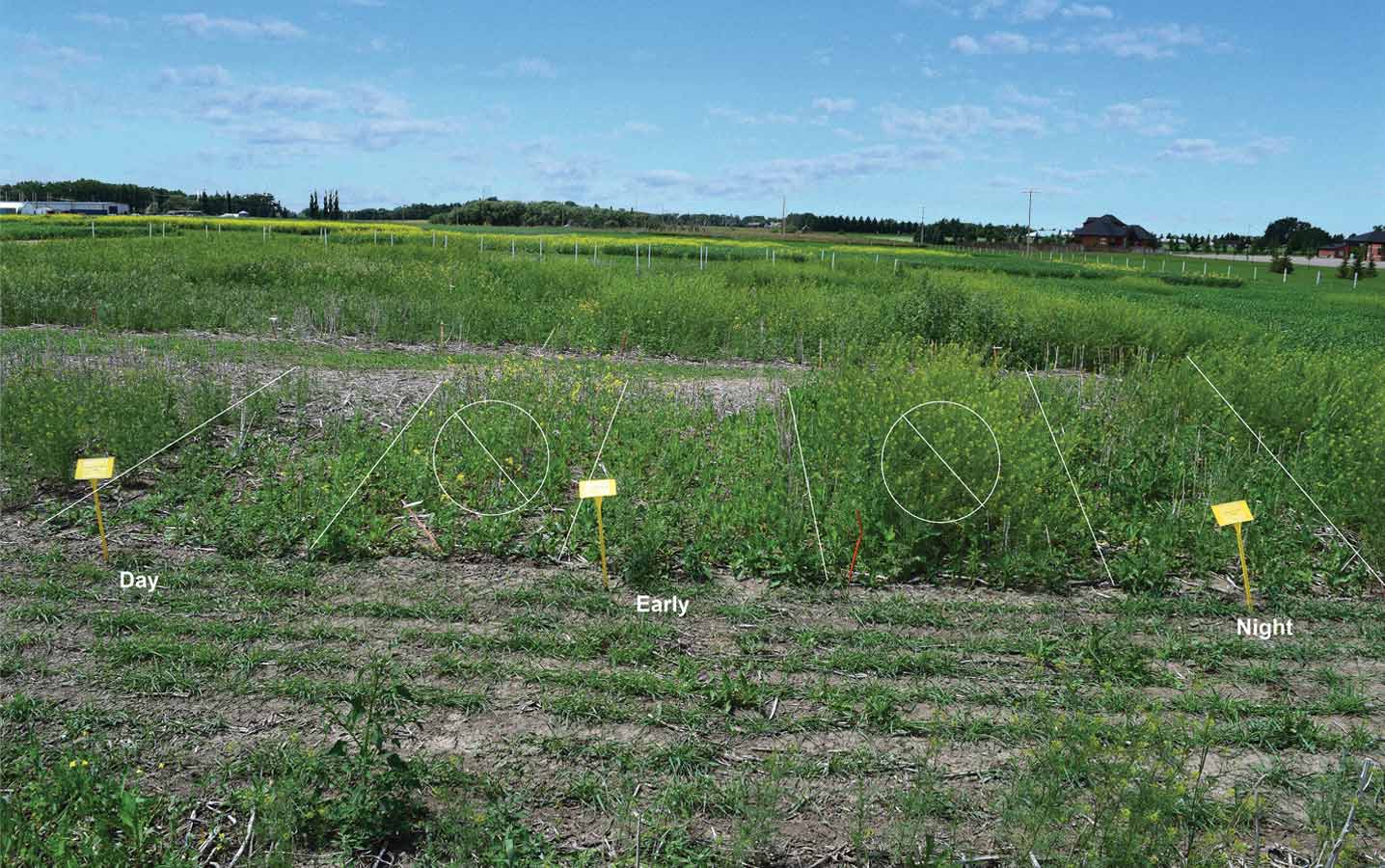Key practice: Predicting how much nitrogen is reserved in the soil is difficult. Given its high cost in canola production, conducting an annual soil test on each field to determine appropriate rates is a good idea. The wild card is moisture supply throughout the growing season. Project title, Lead Researcher: “Long-term effects of different soil...
Read More 
Key practice: Midday herbicide applications are most effective for canola; midnight application for grassy weeds. Project title, Lead researcher: “Night spraying — Pesticide efficacy with night time application (2012-14),” Ken Coles, Farming Smarter Grower organization funder: ACPC Any reduction in herbicide efficacy quickly impacts the return on input investment. With the short Prairie growing season,...
Read More Key practice: As winter transitions into summer, monitor the temperature profile in canola bins for any rapid increases that may indicate spoilage. Aerating and turning seed to warm up canola stored throughout the cold western Canadian winter is not necessary. Project title, Lead researcher: “Determining Best Practices for Summer Storage of Canola in Western Canada,”...
Read More Key Practice: Struvite shows promise as a phosphorus-fertilizer source. This study shows that struvite recovered from hog manure can match yields compared to monoammonium phosphate and provides higher seed-placed safety. Project title, Lead Researcher: “Can slow-release monoammonium phosphate and struvite improve phosphorus use efficiency and reduce seedling toxicity in canola?” Francis Zvomuya, University of Manitoba...
Read More Key practice: Taking action to manage glyphosate-resistant kochia before it is visible in the field is critical to success. Use a rotation of broadleaf control products with good activity on kochia. Project title, Lead researcher: “Glyphosate-resistant kochia (Kochia scoparia L. Schrad.) in Saskatchewan and Manitoba,” 2013-14, Hugh Beckie, Agriculture and Agri-Food Canada (AAFC) Grower organization...
Read More




